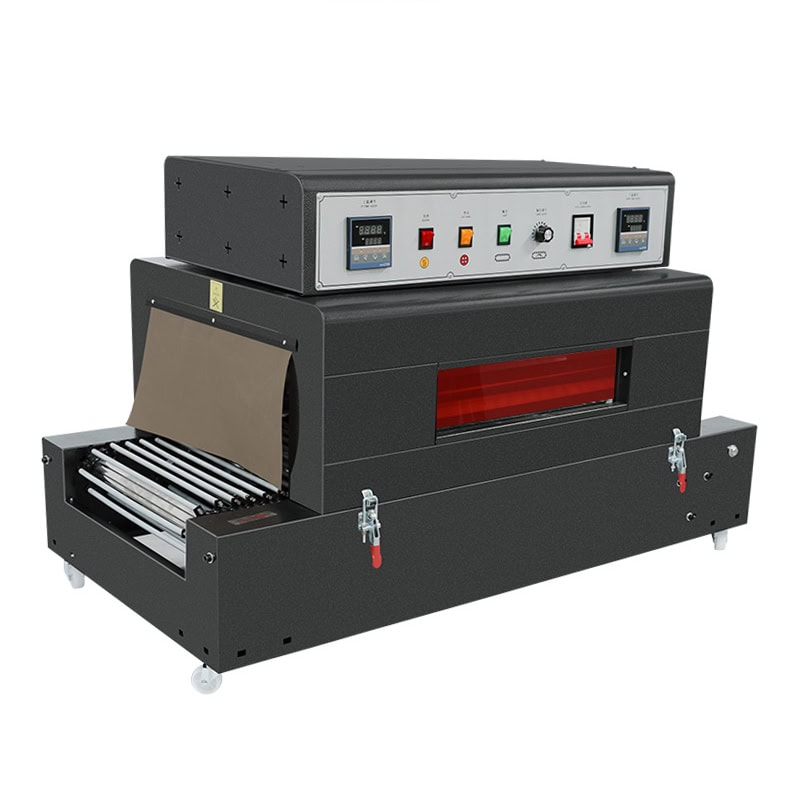Shrink wrap machines are great for packaging, but if you don’t use them correctly, you can damage your products and be inefficient. If you use a shrink wrap machine the right way, you can make your packaging better and be more efficient. Let’s talk about how to use a shrink wrap machine.
To use a shrink wrap machine, you load the shrink film, put your product inside, seal the film, and apply heat to shrink it. You will need to adjust your temperature settings depending on the type of film you use. You’ll also need to monitor the process.
Using a shrink wrap machine has a lot of steps. If you master these steps, you’ll have perfect packaging every time.

Understanding the Shrink Wrap Machine
Before you begin, it is important to understand the structure of the shrink wrap machine. Most shrink wrap machines have three major components: the film dispenser, heat-sealing bar, and the heat source (either a heat gun or a shrink tunnel).
- Film Dispenser: This is where you load the shrink wrap film, which is threaded through rollers and aligned for smooth dispensing.
- Heat-Sealing Bar: This component seals the edges of the film around the product, creating a secure package.
- Heat Source: The heat source, usually a heat gun or shrink tunnel, is used to shrink the film tightly around the product.
Knowing these components helps ensure smooth operation during the packaging process.
Steps to Use a Shrink Wrap Machine
Step 1: Loading the Shrink Film
Begin by loading the shrink wrap film onto the machine. Depending on your product size and the machine specifications, choose the appropriate type of film—either PVC or polyolefin. Thread the film through the rollers and ensure it is aligned correctly to prevent jamming.
Step 2: Wrapping the Product
Place the item inside the shrink wrap film. For conveyor belt systems, the product will be automatically moved into place. If using a manual machine, position the item so that it is evenly wrapped. Make sure the film fully encloses the product before proceeding to the next step.
Step 3: Sealing the Film
Once the product is wrapped, use the heat-sealing bar to seal the open edges of the film. The temperature of the heat-sealing bar should be adjusted according to the type of film to avoid weak or damaged seals. Proper sealing ensures that the film stays intact when the shrinking process begins.

Using the Heat Source to Shrink the Film
Once the film is sealed, the next step is shrinking it around the product. For manual shrink wrap machines, use a heat gun, holding it a few inches from the film, and move it evenly over the surface. In shrink tunnels, the product is conveyed through a controlled heat chamber, which shrinks the film uniformly.
- Heat Gun: Focus on even heating by moving the gun in a sweeping motion.
- Shrink Tunnel: Ensure the tunnel is preheated to the appropriate temperature for consistent shrinkage.
Avoid excessive heat, as it can cause the film to melt or distort.
Adjusting the Temperature Settings
Temperature settings are crucial when using a shrink wrap machine. Different films require different temperature ranges, typically between 250°F to 350°F. Start with the recommended settings for your film type and product. If the film does not shrink evenly, adjust the temperature incrementally. Too much heat can lead to film damage, while insufficient heat will result in a loose wrap.

Ensuring Proper Tension and Sealing
Achieving the right tension when wrapping is essential. The film should be tight enough to shrink effectively, but not so tight that it tears. Inspect the sealed edges to ensure they are smooth and strong. Weak seals can cause the packaging to open during shipping, so it’s critical to maintain proper tension and check for firm seals.
Troubleshooting Common Issues
While operating a shrink wrap machine, you might encounter several common problems, including:
- Uneven Shrinkage: Adjust the temperature or the position of the heat source for more uniform shrinkage.
- Weak Seals: Recheck the heat-sealing bar’s temperature and ensure the film is aligned correctly.
- Film Wrinkles: Wrinkles can occur if the film tension is too loose or the heat is applied unevenly.
Regular maintenance, such as cleaning the sealing bar and replacing worn-out parts, can also help prevent these issues.
Safety Considerations When Using Shrink Wrap Machines
Shrink wrap machines operate at high temperatures, so safety is paramount. Always wear protective gloves and safety glasses. Keep flammable materials away from the work area, and ensure the machine is well-ventilated to avoid inhaling fumes from the heated plastic. Make sure to read the safety instructions provided by the manufacturer to prevent accidents during operation.
Advantages of Using a Shrink Wrap Machine
Shrink wrap machines offer multiple advantages:
- Product Protection: Shrink-wrapped products are shielded from dust, moisture, and tampering.
- Professional Appearance: Shrink wrapping gives products a clean, polished look, making them more appealing to customers.
- Cost-Effectiveness: Shrink wrapping reduces packaging waste and can be a more economical solution compared to bulkier packaging materials.
Overall, shrink wrapping is an effective method for protecting and presenting products.

Disadvantages of Shrink Wrapping
While shrink wrapping is beneficial, it does have some limitations:
- Heat Sensitivity: Products that are sensitive to heat, such as perishable food items or electronics, may not be suitable for shrink wrapping.
- Precision Needed: Shrink wrapping requires precise control of heat and tension, and improper operation can damage the product or the packaging.
- Equipment Costs: High-quality shrink wrap machines can be expensive, and the initial investment might not be feasible for smaller businesses.
Despite these challenges, shrink wrapping remains a highly efficient and versatile packaging solution.
Conclusion:
By following these steps and understanding the components of the machine, you’ll be able to use a shrink wrap machine to package your stuff in a professional and efficient manner.









